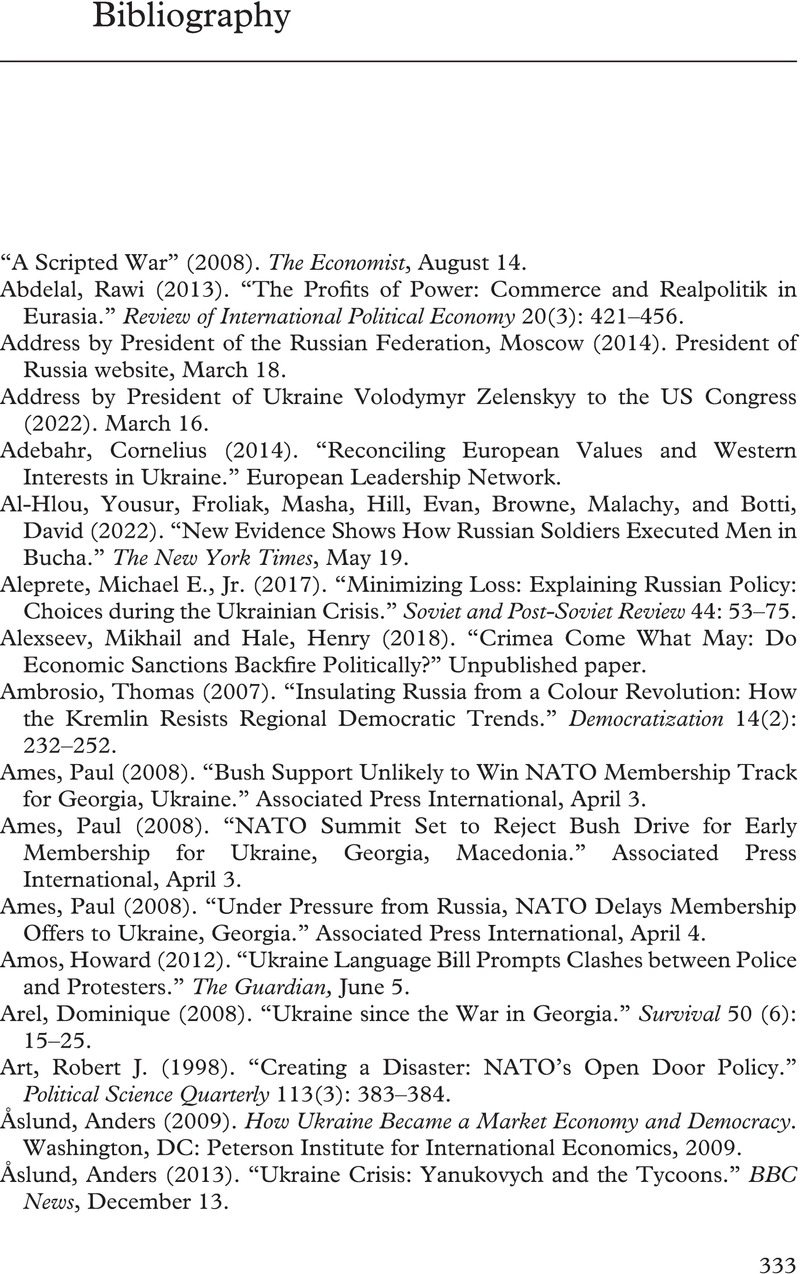Book contents
- Ukraine and Russia
- Ukraine and Russia
- Copyright page
- Contents
- Maps
- Tables
- Preface
- Acknowledgments
- Key People
- 1 The Sources of Conflict over Ukraine
- 2 New World Order? 1989–1993
- 3 Hope and Hardship, 1994–1999
- 4 Autocracy and Revolution, 1999–2004
- 5 Reform and Reversal, 2004–2010
- 6 Viktor Yanukovych and the Path to Confrontation, 2010–2013
- 7 From Revolution to War, 2013–2015
- 8 The Conflict Smolders, 2015–2021
- 9 War
- 10 Conclusion: From Cold War to Hot War
- Bibliography
- Index
- References
Bibliography
Published online by Cambridge University Press: 13 April 2023
- Ukraine and Russia
- Ukraine and Russia
- Copyright page
- Contents
- Maps
- Tables
- Preface
- Acknowledgments
- Key People
- 1 The Sources of Conflict over Ukraine
- 2 New World Order? 1989–1993
- 3 Hope and Hardship, 1994–1999
- 4 Autocracy and Revolution, 1999–2004
- 5 Reform and Reversal, 2004–2010
- 6 Viktor Yanukovych and the Path to Confrontation, 2010–2013
- 7 From Revolution to War, 2013–2015
- 8 The Conflict Smolders, 2015–2021
- 9 War
- 10 Conclusion: From Cold War to Hot War
- Bibliography
- Index
- References
Summary

- Type
- Chapter
- Information
- Ukraine and RussiaFrom Civilized Divorce to Uncivil War, pp. 333 - 366Publisher: Cambridge University PressPrint publication year: 2023



